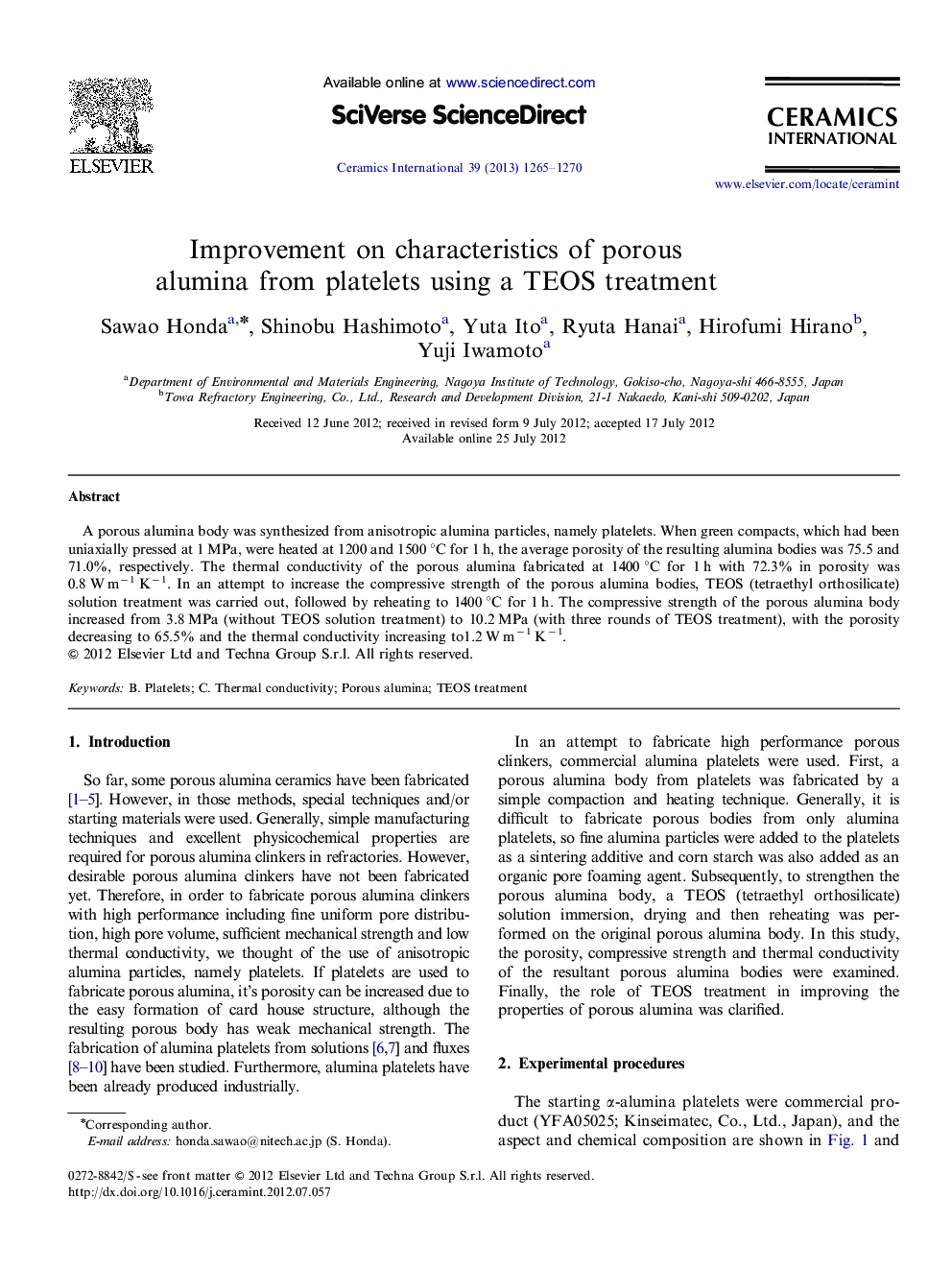| Article ID | Journal | Published Year | Pages | File Type |
|---|---|---|---|---|
| 1462165 | Ceramics International | 2013 | 6 Pages |
A porous alumina body was synthesized from anisotropic alumina particles, namely platelets. When green compacts, which had been uniaxially pressed at 1 MPa, were heated at 1200 and 1500 °C for 1 h, the average porosity of the resulting alumina bodies was 75.5 and 71.0%, respectively. The thermal conductivity of the porous alumina fabricated at 1400 °C for 1 h with 72.3% in porosity was 0.8 W m−1 K−1. In an attempt to increase the compressive strength of the porous alumina bodies, TEOS (tetraethyl orthosilicate) solution treatment was carried out, followed by reheating to 1400 °C for 1 h. The compressive strength of the porous alumina body increased from 3.8 MPa (without TEOS solution treatment) to 10.2 MPa (with three rounds of TEOS treatment), with the porosity decreasing to 65.5% and the thermal conductivity increasing to1.2 W m−1 K−1.
